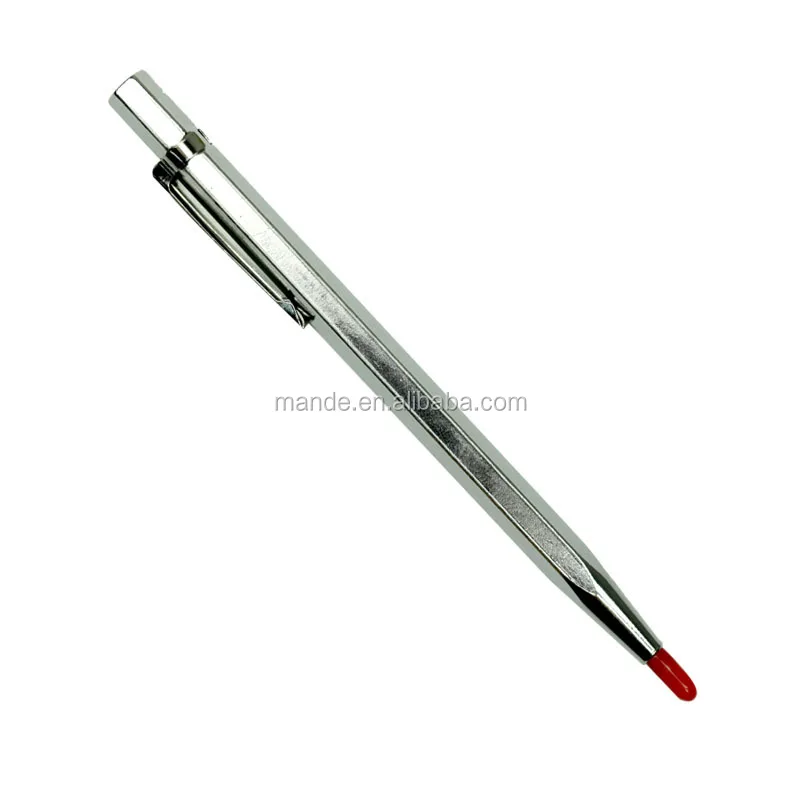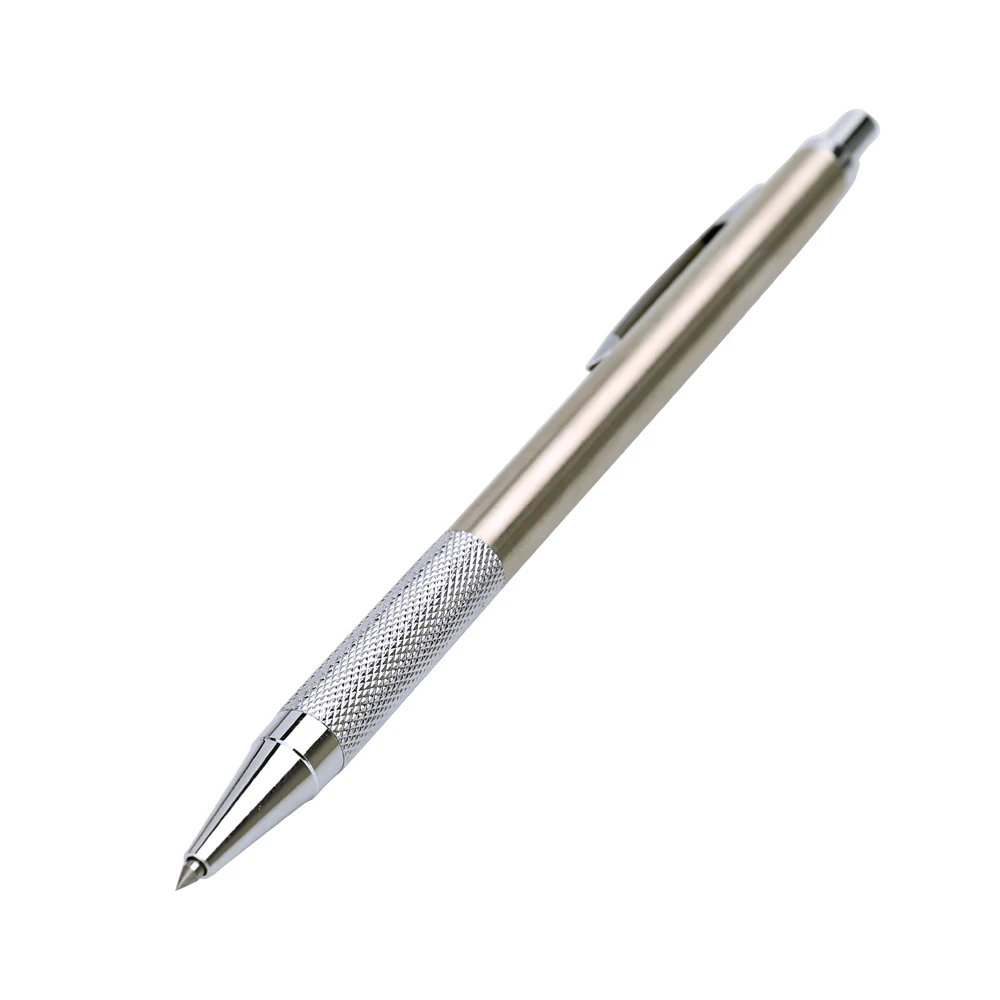
Thin float glass tends to cut easily with a sharp cutter.

General purpose glass is mostly made by the float glass process and is obtainable in thicknesses from 1.5 to 25 mm ( 1⁄ 16 to 1 in). A smaller wheel (3 mm ( 1⁄ 8 in)) is appropriate for cutting patterns and curves since a smaller wheel can follow curved lines without dragging. For a duller wheel on soft glass a larger wheel (e.g., 6 mm ( 1⁄ 4 in) will require no change in hand pressure. Average hand pressure with this size wheel often gives good results. The ratio between the arc of the wheel and the pressure applied with the tool has an important bearing on the degree of penetration.

One of the most popular has a diameter of 5.5 mm ( 7⁄ 32 in). Glass cutters are manufactured with wheels of varying diameters. Running pliers may then be used to "run" or "open" to the split. The glass cutter in the photo has a ball on one end for tapping the glass. The glass may be further weakened by lightly tapping along the cut. The well-scored pane is ready to be split. Pressure as light as 5 or 6 pounds, upon a 120 to 140 degree wheel on thin glass Pressure as heavy as 20+ pounds, with a 154 to 160 degree wheel, on very thick glass. The cutter is then rolled firmly over the glass, producing a "score line" or "fissure," weakening the glass along this line. However, tungsten carbide wheels have been proven to have a significantly longer life than steel wheels and offer greater and more reproducible penetration in scoring as well as easier opening of the scored glass. When properly lubricated a steel wheel can give a long period of satisfactory service. The effective cutting of glass also requires a small amount of oil (kerosene is often used) and some glass cutters contain a reservoir of this oil which both lubricates the wheel and prevents it from becoming too hot: as the wheel scores, friction between it and the glass surface briefly generates intense heat, and oil dissipates this efficiently. Their main drawback is that wheels with sharper hone angles will become dull more quickly than their more obtuse counterparts. The hone angle on most hand-held glass cutters is 120° to 140°, though wheels are made as near-flat as 154° or even 160° for cutting glass as thick as 0.5 inches (13 mm). The greater the hone angle of the wheel, the sharper the angle of the V and the thicker the piece of glass it is designed to cut. Cutting process Ī glass cutter may use a diamond to create the split, but more commonly a small cutting wheel made of hardened steel or tungsten carbide 4–6 mm in diameter with a V-shaped profile called a "hone angle" is used. In 1869, the wheel cutter was developed by Samuel Monce of Bristol, Connecticut, which remains the current standard tool for most glass cutting. Fractures created in this way were not very accurate and the rough pieces had to be chipped or "grozed" down to more exact shapes with a hooked tool called a grozing iron.īetween the 14th and 16th centuries, starting in Italy, a diamond-tipped cutter became prevalent which allowed for more precise cutting. The red hot point was drawn along the moistened surface of the glass causing it to snap apart. In the Middle Ages, glass was cut with a heated and sharply pointed iron rod.

Regular, annealed glass can be broken apart this way but not tempered glass as the latter tends to shatter rather than breaking cleanly into two pieces. This is not to be confused with the tools used to make cut glass objects.

The scoring makes a split in the surface of the glass which encourages the glass to break along the score. Tool Glass cutter, showing hardened steel cutting wheel (far left), notches for snapping, and ball (on end of handle) for tappingĪ glass cutter is a tool used to make a shallow score in one surface of a piece of glass (normally a flat one) that is to be broken in two pieces, for example to fit a window.


 0 kommentar(er)
0 kommentar(er)
